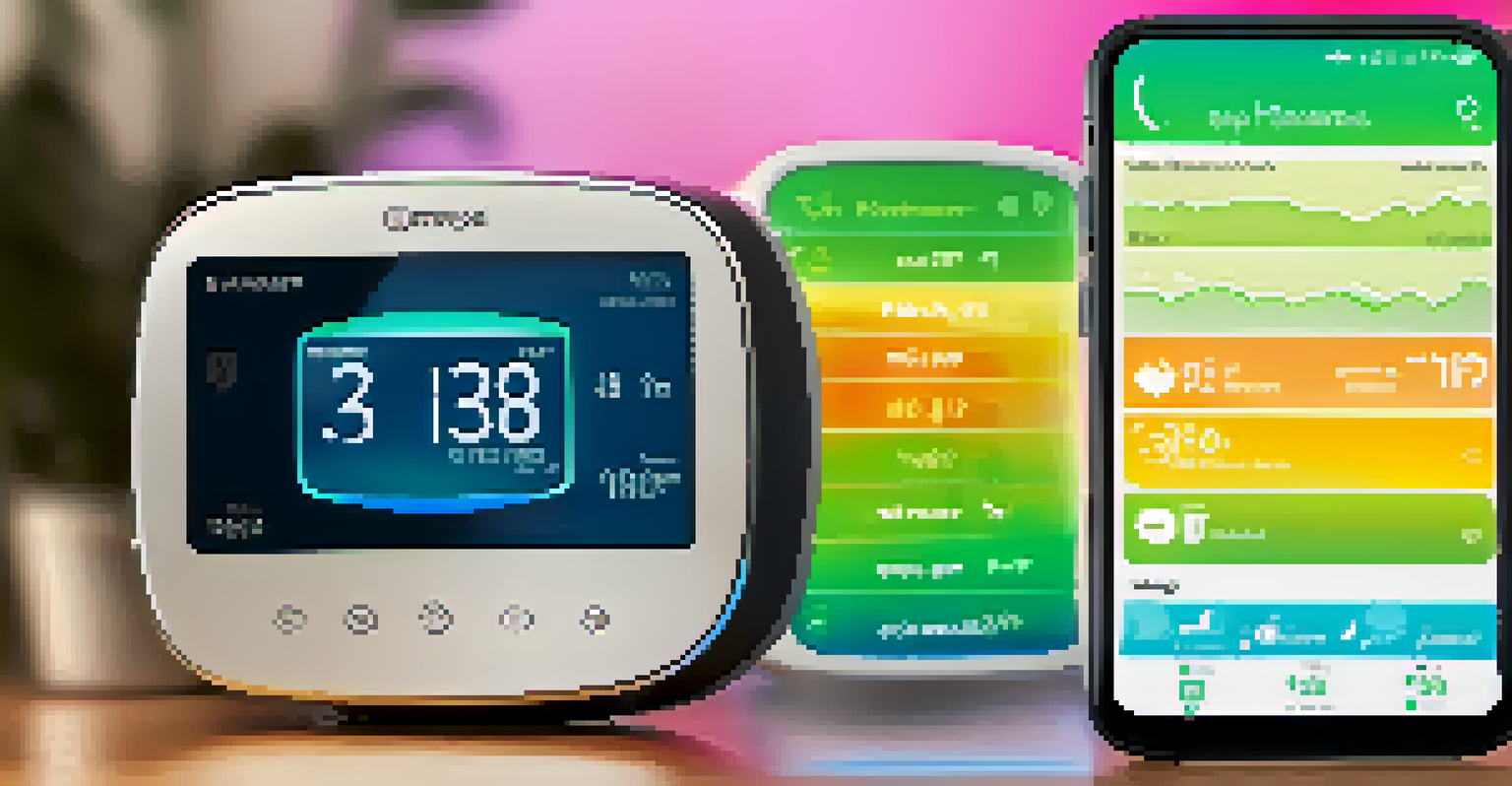Smart Thermostats: A Step Towards Energy Conservation

What is a Smart Thermostat and How Does It Work?
A smart thermostat is an advanced device that allows you to control your home's heating and cooling systems remotely. Unlike traditional thermostats, which require manual adjustments, smart thermostats learn your schedule and preferences over time. They use sensors and algorithms to optimize energy usage, ensuring your home is comfortable when you need it and saving energy when you don’t.
The greatest threat to our planet is the belief that someone else will save it.
Imagine having a thermostat that knows when you're home and when you're away. It can automatically adjust the temperature, helping you save energy without lifting a finger. For example, if you leave for work every morning at 8 AM, the thermostat can lower the heating or cooling just before you leave, and raise it again before you return.
With features like smartphone apps, voice control, and integration with other smart devices, managing your home's climate has never been easier. You can adjust settings on the go or even set schedules to match your routine, making it a hassle-free way to maintain comfort while being energy-efficient.
The Environmental Impact of Smart Thermostats
Smart thermostats not only benefit your wallet but also the environment. By reducing energy consumption, they help lower greenhouse gas emissions from power plants. This is particularly important as we strive to combat climate change and promote sustainable living.

For instance, studies have shown that homes with smart thermostats can reduce heating and cooling costs by up to 20%. This reduction translates to less energy demand, which means less fossil fuel consumption and a smaller carbon footprint. Every bit counts when it comes to protecting our planet!
Smart Thermostats Enhance Comfort
Smart thermostats learn your schedule and preferences, automatically adjusting your home's temperature for optimal comfort and energy efficiency.
Additionally, many smart thermostats provide insights into your energy usage patterns. This feedback empowers homeowners to make informed decisions about their energy consumption, leading to more sustainable habits. It's a win-win situation: you save money and contribute to a healthier planet.
Cost Savings: How Smart Thermostats Save You Money
Investing in a smart thermostat can lead to significant savings on your energy bills. While the initial cost may seem high, the long-term savings often outweigh this. According to the U.S. Department of Energy, homeowners can save around $180 a year on heating and cooling costs.
Energy conservation is the foundation of energy independence.
One of the key ways smart thermostats save money is through their ability to optimize energy use based on your habits. For example, if you frequently forget to adjust the thermostat before leaving the house, a smart thermostat will take care of it for you, ensuring you're not heating or cooling an empty home.
Moreover, some utility companies offer rebates for installing smart thermostats, further offsetting the cost. This means you can enjoy a more comfortable living environment while keeping more money in your pocket—definitely a smart decision!
User-Friendly Features of Smart Thermostats
One of the standout features of smart thermostats is their user-friendly interfaces. Most models come with intuitive apps that allow you to control your home’s temperature from anywhere. Whether you’re on the couch or halfway across the world, adjusting your home’s climate is just a tap away.
Additionally, many smart thermostats can integrate with other smart home devices like lights and security systems. This integration allows for seamless control and automation, enhancing your overall smart home experience. For instance, you can set your thermostat to lower the temperature when your smart security system is activated.
Save Money with Smart Technology
Investing in a smart thermostat can lead to annual savings on energy bills by optimizing heating and cooling based on your habits.
Voice control is another popular feature, enabling users to adjust the temperature simply by speaking. This hands-free option is convenient, especially when your hands are full. With all these features combined, smart thermostats make energy management not just efficient but also incredibly easy.
Smart Thermostats and Home Automation
Smart thermostats are often considered a gateway to a fully automated home. By connecting with other smart devices, they allow for more comprehensive energy management. For example, you can set your thermostat to adjust based on the time of day or in relation to other smart devices, like your smart blinds.
Imagine your smart thermostat coordinating with your smart blinds to block out sunlight during the hottest part of the day, reducing the need for air conditioning. This kind of synergy not only enhances comfort but also maximizes energy savings, showcasing the potential of a smart home ecosystem.
Furthermore, as technology continues to advance, the capabilities of smart thermostats are expected to grow. With features like learning algorithms and adaptive scheduling, these devices will become even more capable of optimizing energy use, making home automation an exciting prospect for homeowners.
Choosing the Right Smart Thermostat for Your Home
When it comes to selecting a smart thermostat, there are several factors to consider. Start by evaluating compatibility with your existing heating and cooling systems. Not all smart thermostats work with every HVAC setup, so double-checking this is crucial to avoid any installation issues.
Next, think about the features that matter most to you. Do you want remote access through a smartphone app? How about voice control or integration with other smart devices? Defining your priorities will help narrow down the options and find the perfect match for your lifestyle.
Eco-Friendly Energy Management
By reducing energy consumption, smart thermostats contribute to lower greenhouse gas emissions and promote sustainable living.
Lastly, don’t forget to consider energy-saving features and user reviews. Many smart thermostats come with programmable options that allow you to customize heating and cooling schedules. Reading feedback from other users can provide valuable insights into the performance and reliability of the thermostat you're considering.
The Future of Smart Thermostats and Energy Conservation
The future of smart thermostats looks bright as technology continues to evolve. Innovations in machine learning and artificial intelligence are paving the way for even smarter devices that can predict your heating and cooling needs with remarkable accuracy. This means even greater energy savings and enhanced comfort.
Moreover, as more households adopt smart thermostats, we can expect them to play a crucial role in energy conservation on a larger scale. When many homes are using smart technology to manage energy consumption, the cumulative effect can lead to significant reductions in energy demand and environmental impact.

In conclusion, smart thermostats are more than just a trend; they represent a meaningful step towards energy conservation. By embracing this technology, homeowners can enjoy a more comfortable living environment while contributing to a sustainable future. It's an exciting time to consider making this smart investment.